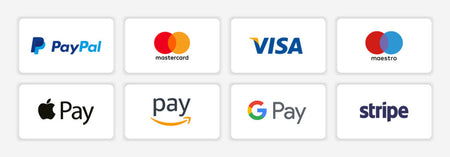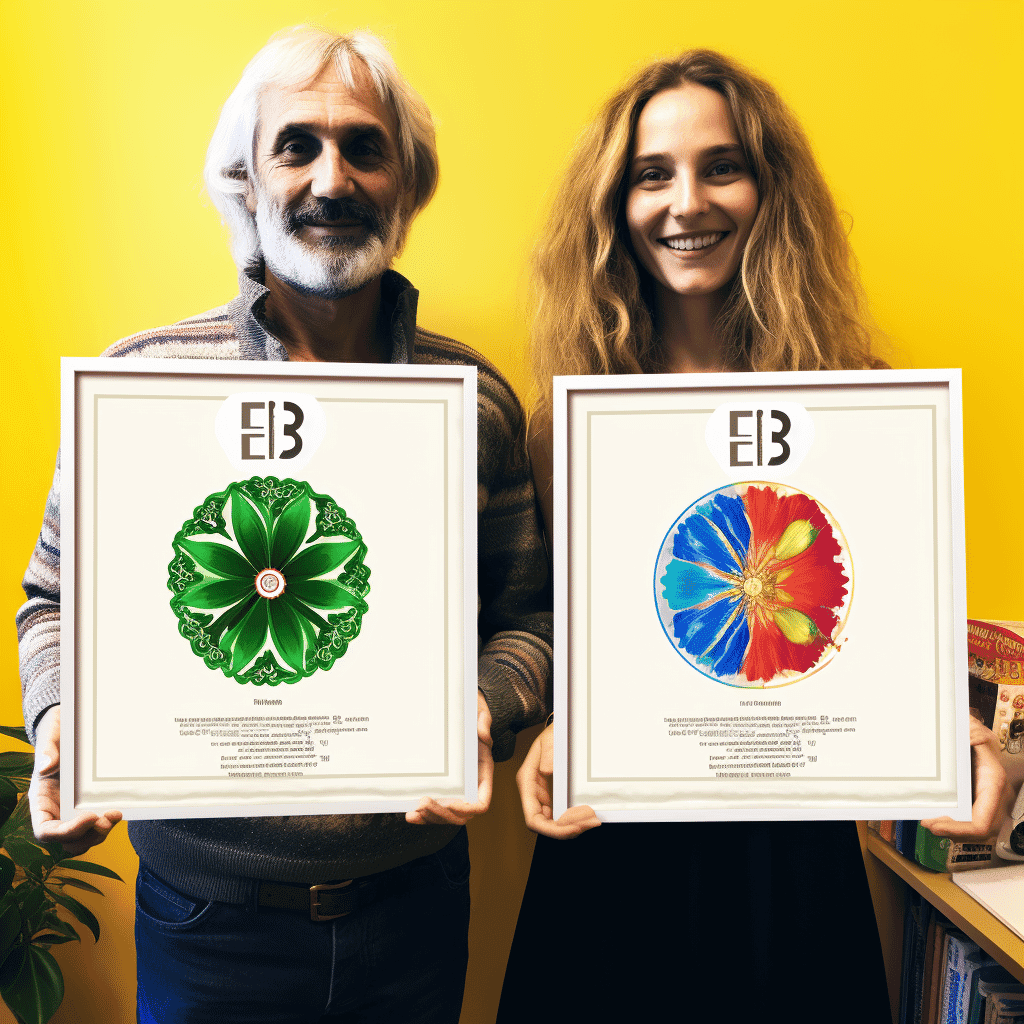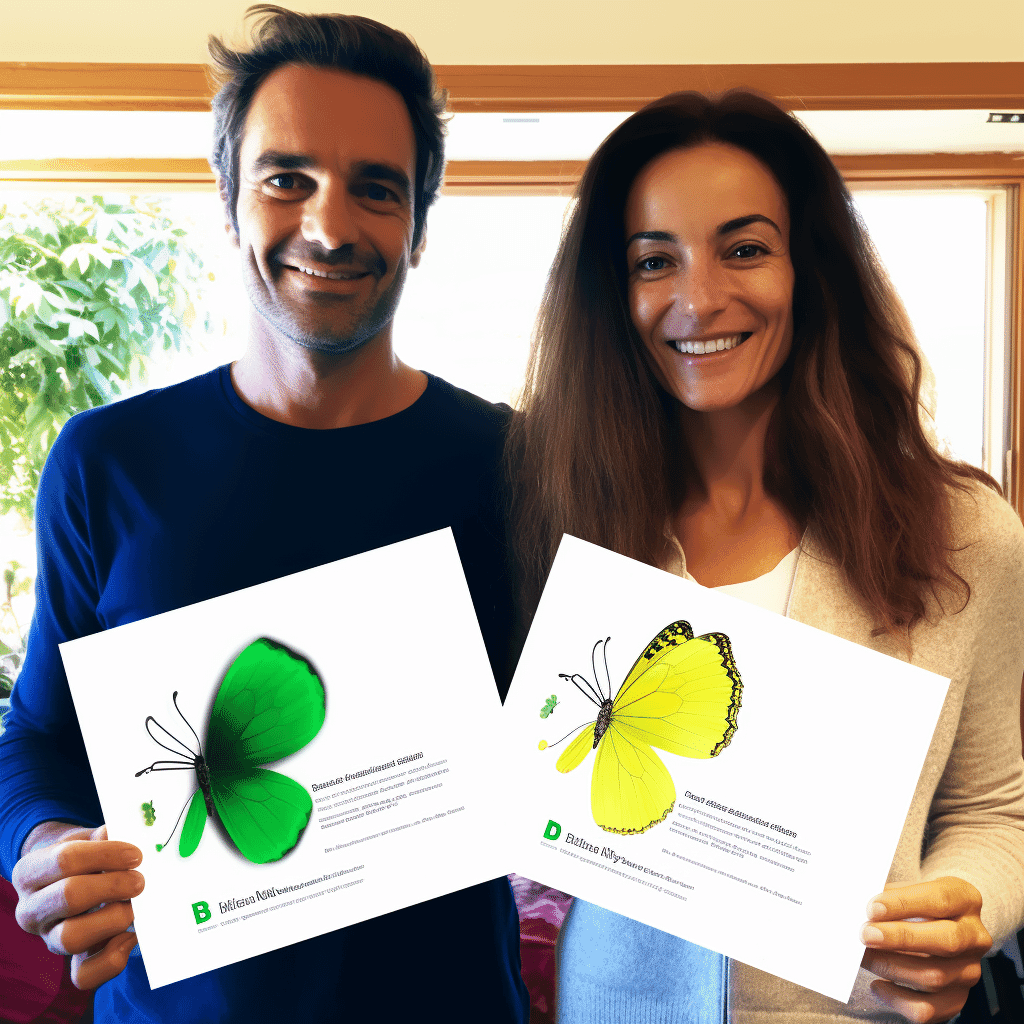Descrição
How to issue a course certificate
If you are thinking about offering an online or in-person course, one way to value your work and ensure participant recognition is by issuing certificates. In this article, we will show you how to issue a course certificate in a simple and efficient way.
Step 1: Define the criteria for issuing the certificate
Before you start offering certificates, it is important to define the criteria that participants must meet to receive the document. This may include completing all proposed activities, participating in a minimum number of classes, completing a final assessment, among others.
Step 2: Create a certificate template
To facilitate the process of issuing certificates, it is recommended to create a standard template that can be filled out with each participant's data. This template should contain information such as the name of the course, the number of hours, the name of the participant and the signature of the person responsible for the course.
Example of a certificate template:
Course Name: [Course Name]
Course Length: [Course Length]
Participant: [Participant Name]
Signature: [Responsible Person's Signature]
Step 3: Issue the certificates
With the criteria defined and the certificate template created, it is time to issue the certificates to the participants who met all the requirements. You can choose to issue the certificates manually, filling out each one with the participant's data, or use online tools that automate this process.
Step 4: Publish the certificates
After issuing the certificates, it is important to publish them so that participants have access to the document. You can make them available in digital format, by sending them by email or making them available in a restricted area of your website. In addition, it is a good idea to hand out the certificates in physical format at course closing events, for example.
Step 5: Keep a record of the certificates issued
Finally, it is essential to keep a record of the certificates issued, both in digital and physical format. This will make it easier to consult and prove the students' participation in the course, if necessary in the future.
By following these steps, you will be able to issue course certificates in an organized and professional manner. Remember that the certificate is a recognition of the effort and dedication of the participants, and can be a differentiator when it comes to finding new students for your courses.
- Define the criteria for issuing the certificate
- Create a certificate template
- Issue the certificates
- Disclose the certificates
- Keep a record of the certificates issued
| Step | Description |
|---|---|
| 1 | Define the criteria for issuing the certificate |
| 2 | Create a certificate template |
| 3 | Issue certificates |
| 4 | Share certificates |
| 5 | Keep a record of issued certificates |
We hope this article has helped you understand how to issue course certificates. Remember to adapt the tips according to the needs of your course and your participants. Good luck!
How to issue course certificates: a complete guide
If you are an instructor or responsible for offering online or in-person courses, it is important to know how to issue certificates to your students. In this article, we will explore step by step how to issue course certificates correctly and efficient.
What is a course certificate?
A course certificate is a document that proves the participation and completion of a specific course by the student. It is a form of recognition and validation of the knowledge acquired during the course.
Step by step to issue a course certificate
Here are the essential steps to provide certificates to your students:
- Define the eligibility criteria: Determine what the requirements are for the student to be able to receive the certificate, such as attending all classes, submitting assignments or obtaining a minimum grade.
- Create a certificate template: Develop a professionally designed certificate template and include information such as the student's name, course name, course load, completion date and the parent's signature.
- Customize the certificates: Fill in the fields of the certificate template with the data of each individual student. This can be done manually or using automation tools.
- Send certificates: Send certificates to students via email or make them available for download in a restricted area of your website or learning platform.
- Share certificates: Encourage students to share their certificates on social media and include testimonials or positive reviews about the course to increase your credibility.
Related SERP features
When researching how to give course certificates, you may come across some relevant SERP features, such as:
- Sitelinks: Additional links displayed below the main result, which can direct to specific pages on your website, such as the certificates page.
- Reviews: Student reviews and opinions about your course, which can appear in the SERP and influence the decision of other students.
- People also ask: Frequently asked questions related to the topic, such as "How do I issue an online course certificate?" or "What are the requirements to receive a course certificate?".
- Knowledge panel: A side panel that displays additional information about the searched topic, such as definitions and relevant data about course certificates.
- FAQ: A highlighted FAQ section, which may contain answers to common questions about how to issue a course certificate.
- Related searches: Suggestions for related searches, such as "Course certificate template" or "How to create custom certificates".
These SERP features can provide additional information to users and increase the visibility of your content related to course certificates.
Conclusion
Now that you know how to issue a course certificate, you can implement these practices in your teaching platform. Remember to follow the steps mentioned and take advantage of SERP features to increase the visibility and credibility of your certificates. This way, you will be providing adequate recognition to your students and encouraging their professional growth.
We hope this complete guide has been useful and that you can apply these tips to your course certification strategy. Good luck!
What is a course certificate and how to issue one?
When we complete a course, whether in-person or online, it is common to receive a certificate as a way of proving the learning and time dedicated to studying. The course certificate is an important document, as it can be used to prove skills and knowledge acquired in a certain area.
Why issue a course certificate?
The course certificate is a way of valuing the effort and dedication of students. In addition, it can be used as a differentiator on the resume, highlighting the teacher. issional among other candidates in selection processes. It is also a way to encourage the search for knowledge and participation in courses and training.
How to issue a course certificate?
To issue a course certificate, it is necessary to follow some important steps. First, it is necessary to define the format of the certificate, which can be physical or digital. Next, it is necessary to create an attractive and professional design, using elements such as colors, fonts and the institution's logo.
After creating the design, it is important to include the necessary information on the certificate, such as the student's name, the name of the course, the workload, the completion date and the name of the institution that offered the course. It is also possible to include a unique registration number for each certificate, guaranteeing its authenticity.
After creating the certificate, it is necessary to define the delivery method. If it is a physical certificate, it can be sent by mail or delivered in person. In the case of a digital certificate, it can be sent by email or made available for download on a website or teaching platform.
It is important to note that the course certificate must be issued by a reliable and recognized institution, in order to be valid and accepted by employers and educational institutions.
Sitelinks
Sitelinks are additional links that appear in Google search results, below the main result. They are useful for directing users to specific pages on the website, such as the page with courses offered by the institution.
Reviews
Reviews are evaluations made by students who have already completed the course. They can be found on specialized websites or on the institution's social networks. Reviews are important to help other students make an informed decision about which course to choose.
People also ask
The "People also ask" section shows questions related to the topic searched. In this case, some questions that may appear are: "How to get an online course certificate?", "How long is a course certificate valid for?" and "How to include a course certificate on a resume?".
Knowledge panel
The knowledge panel is an information box that appears in Google search results. It may contain relevant information about the topic searched, such as definitions, statistics and related links.
FAQ
The FAQ (Frequently Asked Questions) section is a way to answer users' most common questions about the subject. Some examples of questions that may be included are: "What are the types of course certificates?", "How to verify the authenticity of a course certificate?" and "Which institutions are recognized for issuing course certificates?".
Top stories
The "Top stories" section displays the most recent news related to the topic searched. In this case, news about new regulations for issuing course certificates or about institutions offering free courses may be displayed.
Recipes
The "Recipes" section is not relevant to the topic of course certificates.
Find results on
The "Find results on" section shows other websites where you can find information about the searched topic. In this case, websites of educational institutions, online course platforms and discussion forums may be displayed.
See results about
The "See results about" section shows other topics related to the searched topic. In this case, results about how to obtain a degree or about the validity of technical course certificates may be displayed.
Related searches
The "Related searches" section shows other searches related to the searched topic. In this case, searches such as "How to give a free course certificate?", "How to give a free course certificate?", "How to give a free course certificate?" may be displayed. "language course certificate?" and "How to give a computer course certificate?".
In short, the course certificate is an important document to prove acquired skills and knowledge. To give a course certificate, it is necessary to define the format, create an attractive design, include the necessary information and define the delivery method. In addition, it is important to consider SERP features, such as sitelinks, reviews, people also ask, knowledge panel, FAQ, top stories, find results on, see results about and related searches, to offer a complete experience to users searching for the subject.
What is the best way to give a course certificate
When it comes to offering a course certificate, it is important to ensure that it is recognized and valued by students. There are different ways to provide a course certificate, and in this article, we will discuss some of the best practices to ensure that your certificate is of high quality and meets students' expectations.
1. Define eligibility criteria
Before you start offering course certificates, it’s important to define eligibility criteria. This means determining what requirements students must meet to receive the certificate. For example, you might require students to complete all course assignments and assessments with a minimum score.
2. Create a professional design
A well-designed course certificate is essential for conveying credibility and value to students. Use HTML tags like and to highlight important information, such as the student’s name, course name, and completion date. You can also use
and to organize sections of the certificate.
3. Include relevant information
In addition to basic information like the student’s name and course name, it’s important to include relevant information on the certificate. This could include the number of hours of study, a brief description of the course content, and any other information that is relevant to learners and can help them highlight their skills.
4. Add a verification link
To ensure the authenticity of the certificate, it is a good practice to add a verification link. This can be done using the tag and the "href" attribute to direct learners to a page where they can verify the validity of the certificate.
5. Provide sharing options
To allow learners to share their certificate with others, it is a good idea to include social media sharing options. This can be done by adding sharing buttons or providing instructions on how students can share the certificate on their own social networks.
SERP Features:
Sitelinks
Sitelinks are additional links that appear below the main result in search results. They provide users with quick access to relevant internal pages on your website. By optimizing your website and its internal linking structure, you increase the chances of having sitelinks appear in search results.
Reviews
Reviews are a form of feedback from students about the quality of the course and certificate offered. Encourage your students to leave reviews and testimonials about their experience, as this can help attract more interested students.
People also ask
The "People also ask" section in search results displays questions related to the topic searched. Make sure you address some of these questions in your content to increase your chances of appearing in this section.
Knowledge panel
A knowledge panel is an information box that appears in search results and provides quick, relevant information on a specific topic. Make sure you include the Improve your website and provide relevant information to increase your chances of having a knowledge panel displayed.
FAQ
Frequently asked questions (FAQs) are a great way to provide additional information about how to award a course certificate. Create a FAQ section on your website and address the most common questions that students have.
Top stories
Top stories related to your topic may appear in search results as “Top stories.” Stay up to date with the latest news and try to create relevant content to increase your chances of being featured in this section.
Recipes
While the term “recipes” is most commonly associated with cooking, it can also be used to provide step-by-step instructions on how to award a course certificate. Organize your content in a clear and structured way, providing clear instructions for readers.
Find results on
The “Find results on” section in search results shows websites related to the topic you searched for. Make sure you optimize your website and provide relevant content to increase your chances of appearing in this section.
See results about
The “See results about” section in search results shows results related to the topic you searched for. Make sure you provide relevant and comprehensive content to increase your chances of appearing in this section.
Related searches
The “Related searches” section in search results shows searches related to the topic you searched for. Use these related searches as inspiration for creating additional content to address users’ questions and concerns.
In summary, when offering a course certificate, it’s important to define eligibility criteria, create a professional design, include relevant information, add a link for verification, and provide sharing options. Additionally, take advantage of SERP features to increase the visibility of your content in search results. We hope this article has been helpful in helping you understand how to give the best course certificate possible.
What is a course certificate for?
Course certificates are documents that prove participation and completion of a specific course. They are very important for both students and educational institutions, as they attest to the knowledge acquired and can be used as proof of qualification in various situations.
Benefits of a course certificate
Having a course certificate can bring several benefits to students. Some of them are:
- Professional recognition: The certificate proves that the student has specific knowledge in a certain area, which can increase their chances of getting a job or a promotion.
- Credibility: By presenting a course certificate, the student demonstrates that they have dedicated themselves to learning and improving in a certain subject, which can generate trust from clients, coworkers and employers.
- Knowledge update: Taking courses and obtaining certificates is a way of staying up to date with the latest news and trends in a certain area, which is essential in an increasingly competitive job market.
How to issue a course certificate
To issue a course certificate, it is necessary to follow a few steps. See below:
- Define the issuance criteria: Before starting the course, it is important to establish the criteria for obtaining the certificate, such as minimum workload, grades in assessments, participation in activities, among others.
- Develop the certificate template: Create a certificate template with a professional design that contains the necessary information. arias, such as the student's name, the name of the course, the workload, the completion date, among others.
- Personalize the certificate: When issuing the certificate, fill in the fields with the specific information for each student, ensuring that the document is unique and personalized.
- Sign the certificate: The certificate must be signed by a competent authority, such as the course coordinator or the director of the educational institution.
- Deliver the certificate: Finally, deliver the certificate to the student in physical or digital form, ensuring that he or she has access to the document that proves his or her participation and completion of the course.
It is important to emphasize that the issuance of course certificates must be done responsibly and ethically, ensuring that only students who have met all the necessary requirements receive the document.
Conclusion
Course certificates are important tools for demonstrate knowledge and qualifications. They can bring several benefits to students, such as professional development and credibility. To issue a course certificate, it is necessary to follow some steps, such as defining issuance criteria, creating a personalized template, signing the certificate and delivering it to the student. It is essential that certificates are issued responsibly and ethically.
Read more about: Course certificates
References:
Sitelinks: Find more information about course certificates on our website.
Reviews: See what our students have to say about our course certificates.
People also ask: How do I issue a course certificate? What are the benefits of having a course certificate?
Knowledge panel: Learn all about course certificates: how to issue, benefits and more.
FAQ: Frequently asked questions about course certificates.
Top stories: Stay up to date with the latest news about course certificates.
Recipes: Discover the best practices for issuing course certificates.
Find results on: Find results about course certificates on our website.
See results about: See more results about course certificates.
Related searches: Online course certificate, how to validate a course certificate, how to obtain a course certificate.
Who can issue a course certificate?
When we complete a course, it is common for us to receive a certificate as proof of our learning. But have you ever stopped to think about who can issue this document? In this article, we will explore who has the authority to issue course certificates and how it works. Keep reading to find out!
What is a course certificate?
A course certificate is a document that certifies the completion of a specific course by the student. It serves as proof of learning and can be used for various purposes, such as enhancing a resume, proving hours of study or even to obtain benefits in public exams or selection processes.
Who can issue a course certificate?
The issuance of course certificates may vary according to the institution or organization responsible for the course. Generally, it is educational institutions, such as schools, colleges and universities, that have the authority to issue to issue certificates for regular courses.
However, there are also free courses offered by companies, specialized institutions or even by self-employed professionals. In these cases, issuing the certificate may be the responsibility of the instructor or the institution offering the course.
How do I know if a certificate is valid?
To ensure the validity of a course certificate, it is important to check whether the institution or instructor responsible for the course is recognized and has the authority to issue this type of document. In addition, it is recommended to research the reputation of the institution or instructor, looking for reviews, student testimonials and even checking if there are any registered complaints or reports.
Another way to check the validity of a certificate is to contact the institution or company that requires the document and confirm whether they recognize the institution or instructor responsible for issuing it.
How do I obtain a course certificate?
To obtain a course certificate, you must complete all the steps and requirements required by the course. This may include attending classes, completing activities, participating in assessments, and obtaining a minimum passing grade.
After meeting all requirements, the institution or instructor responsible for the course will issue the certificate, which may be sent by email, made available for download on an online portal, or delivered in person, depending on the institution's policy.
Conclusion
In summary, issuing course certificates is the responsibility of educational institutions or instructors responsible for open courses. To ensure the validity of the certificate, it is important to check the reputation of the institution or instructor and confirm whether they are recognized by the companies or institutions that require the document.
We hope this article has clarified your doubts about who can issue a course certificate. If you are looking for a course and want to obtain a valid certificate, remember to research and choose a reliable institution. Good luck with your studies!
Reference 1:
Link to more information about course certificates.
Reference 2:
Link to a list of institutions recognized for issuing certificates.
Reference 3:
Link to an article about the importance of course certificates in the job market.
Find more results about course certificates:
- Results about how to obtain course certificates
- Results about the validity of course certificates
- Results about recognized institutions for issuing certificates
Related articles:
- How to choose a course with a valid certificate
- Tips to make the most of your course certificate
- The benefits of having course certificates on your resume
Related searches:
- Which institutions issue online course certificates?
- How to check the validity of a course certificate?
- What are the most valued types of course certificates?
How long does a course last and how to obtain a certificate
When we decide to invest in our education and improve our skills, it is natural that some questions arise, such as how long does a course last and how to obtain a certificate. In this article, we will explore these questions and provide useful information for those interested in training in a particular area.
How long does a course last?
The length of a course can vary significantly, depending on the type of course and the educational institution. Some courses are shorter, lasting a few weeks or months, while others can last years.
Short-term courses, also known as free courses, generally aim to provide specific and practical knowledge in a short period of time. They are ideal for those looking for a quick update in a particular area or who want to acquire new skills for the job market.
Technical and undergraduate courses, on the other hand, have a longer duration, varying according to the workload and curricular structure. Technical courses last on average 1 to 2 years, while undergraduate courses can last 3 to 5 years, depending on the field of study.
In addition, there are postgraduate courses, such as specializations, master's degrees and doctorates, which require more time to dedicate and study, and can last from 1 to 5 years, depending on the level of training.
How to issue a course certificate?
After completing a course, it is important to obtain a certificate that proves your participation and the knowledge acquired. The process for obtaining a certificate may vary depending on the educational institution, but generally involves the following steps:
- Check the requirements: Before starting the course, check whether the institution issues certificates and what the requirements are to obtain them. Some courses may require you to complete additional activities or pass a final assessment.
- Complete all activities: During the course, make sure you complete all proposed activities, such as readings, exercises and projects. These activities are essential for learning and also for obtaining the certificate.
- Participate in assessments: If the course has assessments, such as tests or assignments, it is important to prepare and actively participate in these stages. Your performance in the assessments may influence whether you obtain the certificate.
- Request the certificate: After completing all stages of the course, contact the educational institution to request the certificate. Generally, you will need to fill out a form and pay an administrative fee.
It is important to note that the validity and recognition of the certificate may vary depending on the institution where the course was taken. Make sure you choose a reliable and recognized educational institution to ensure the validity of your certificate.
In summary, the duration of a course may vary depending on the type and educational institution. To obtain a certificate, you must meet the requirements established by the institution and complete all stages of the course. Remember to choose a reliable and recognized institution to ensure the validity of your certificate.
We hope this article has clarified your doubts about the duration of a course and how to obtain a certificate. If you have any further questions related to this topic, check out the sections below for more relevant information.
Sitelinks:
- How to choose a quality course
- Tips for getting the most out of an online course
Reviews:
- Online course reviews
- Student testimonials about course lengths
People also ask:
- What are the most popular courses today?
- Is it possible to complete a course faster than the allotted time?
Knowledge panel:
- What is a course certificate?
- What are the benefits of obtaining a certificate?
FAQ:
- How long does it take to receive the certificate after request?
- Can I use the certificate to prove my experience in ofissional?
Top stories:
- N
Estimar frete
Payment & Security

Featured collection





















![Curso de Angular e NodeJS - O Guia da Pilha MEAN [Edição 2023] - IBRATH Instituto Brasileiro de Terapias Holísticas teste011020230809](http://enciclopedia.paginasdabiblia.com/cdn/shop/products/a19556.png?v=1699935448&width=1024)




![Curso de Docker & Kubernetes: O Guia Prático [Edição 2023] - IBRATH Instituto Brasileiro de Terapias Holísticas teste011020230809](http://enciclopedia.paginasdabiblia.com/cdn/shop/products/a19570.png?v=1699935525&width=1024)





















Dúvidas Gerais
Após a confirmação do pagamento, você receberá um e-mail com todas as instruções para acessar seus cursos. O e-mail incluirá um link para a plataforma de ensino, onde você poderá fazer login utilizando suas credenciais cadastradas no momento da compra. Caso seja um curso em formato de arquivo para download, o mesmo estará disponível na área do aluno e poderá ser acessado diretamente pelo link enviado. Se você não receber o e-mail de acesso em até 24 horas, verifique sua caixa de spam ou entre em contato com nossa equipe pelo e-mail suporte@amentil.com.br.
Após a confirmação do pagamento, seu pedido será processado e enviado para o endereço cadastrado. Você receberá um e-mail com os detalhes do envio, incluindo o código de rastreamento para acompanhar a entrega. Trabalhamos com transportadoras confiáveis e os prazos variam de acordo com o método de envio escolhido e sua localização. É importante garantir que o endereço de entrega esteja correto para evitar atrasos. Caso tenha dúvidas ou problemas com a entrega, nossa equipe de suporte está à disposição pelo e-mail suporte@amentil.com.br.
Você pode tirar dúvidas diretamente com nossa equipe de suporte por diversos canais:
- E-mail: Envie sua pergunta para suporte@amentil.com.br, e nossa equipe responderá em até 2 dias úteis.
- Telefone: Ligue para +55 (48) 1234-5678, disponível de segunda a sexta, das 9h às 18h.
- WhatsApp: Envie uma mensagem para +55 (48) 91265-4321 e receba atendimento rápido e prático.
- Formulário de Contato: Preencha o formulário disponível em nosso site na página Contato.
- Redes Sociais: Você também pode enviar suas dúvidas pelo Instagram ou Facebook em @amentil.sa.
Estamos sempre prontos para ajudar!
Reembolso e garantias
O prazo de reembolso pode variar dependendo da forma de pagamento utilizada:
- Cartão de Crédito: O estorno será realizado em até 7 dias úteis após a aprovação do reembolso, mas o crédito poderá aparecer na sua fatura em um prazo de 30 a 60 dias, conforme a política da operadora do cartão.
- Boleto Bancário ou Transferência: O valor será devolvido via depósito em conta bancária em até 7 dias úteis após a aprovação do reembolso.
Você pode solicitar a devolução de produtos físicos seguindo o passo a passo abaixo:
- Entre em contato com nosso suporte:
- Aguarde nossa resposta:
Nossa equipe analisará sua solicitação em até 3 dias úteis e fornecerá as instruções detalhadas para a devolução. - Prepare o produto:
- Envie o produto:
- Reembolso ou troca:
Nosso compromisso é fornecer uma experiência confiável e segura ao acessar nossa enciclopédia online. Garantimos a qualidade dos serviços e funcionalidades oferecidos, seguindo as condições descritas abaixo:
1. Garantia de Acesso
- Disponibilidade: Oferecemos garantia de disponibilidade da enciclopédia online 24 horas por dia, 7 dias por semana, exceto durante períodos programados de manutenção ou por problemas técnicos fora do nosso controle.
- Resolução de Problemas: Em caso de interrupções no serviço, nossa equipe técnica atuará para restaurar o acesso no menor tempo possível.
2. Garantia de Conteúdo
- Precisão e Atualização: Todo o conteúdo disponibilizado é cuidadosamente revisado para garantir precisão e relevância. No entanto, a enciclopédia online é constantemente atualizada, e não podemos garantir a exatidão absoluta em casos de informações sujeitas a mudanças rápidas.
- Correção de Erros: Caso identifique erros ou inconsistências no conteúdo, você pode nos informar pelo e-mail conteudo@amentil.com.br, e faremos a análise e correção, se necessário.
3. Garantia de Segurança
- Proteção de Dados: Utilizamos tecnologias avançadas para proteger suas informações pessoais e garantir que sua navegação na enciclopédia seja segura.
- Privacidade: Todos os dados coletados seguem as diretrizes da nossa Política de Privacidade.
4. Garantia de Reembolso
Para assinaturas da enciclopédia online:
- Direito de Arrependimento: Você pode solicitar o cancelamento e reembolso integral em até 7 dias corridos após a compra, desde que não tenha acessado conteúdos pagos da plataforma.
- Problemas Técnicos: Caso não consiga acessar os conteúdos devido a falhas técnicas imputáveis à plataforma, garantimos suporte prioritário e, se o problema não for resolvido, você pode solicitar reembolso proporcional ao período não utilizado.
5. Limitações
- Conexão à Internet: Não garantimos acesso à enciclopédia em situações de instabilidade ou falhas na conexão de internet do usuário.
- Uso Indevido: O acesso e uso da enciclopédia são pessoais e intransferíveis. O compartilhamento de credenciais pode resultar na suspensão ou cancelamento da assinatura sem reembolso.
6. Contato para Garantias
Caso precise de suporte ou queira exercer algum direito de garantia, entre em contato conosco:
- E-mail: suporte@amentil.com.br
- Telefone: +55 (48) 1234-5678
- Horário de atendimento: Segunda a sexta, das 9h às 18h.



